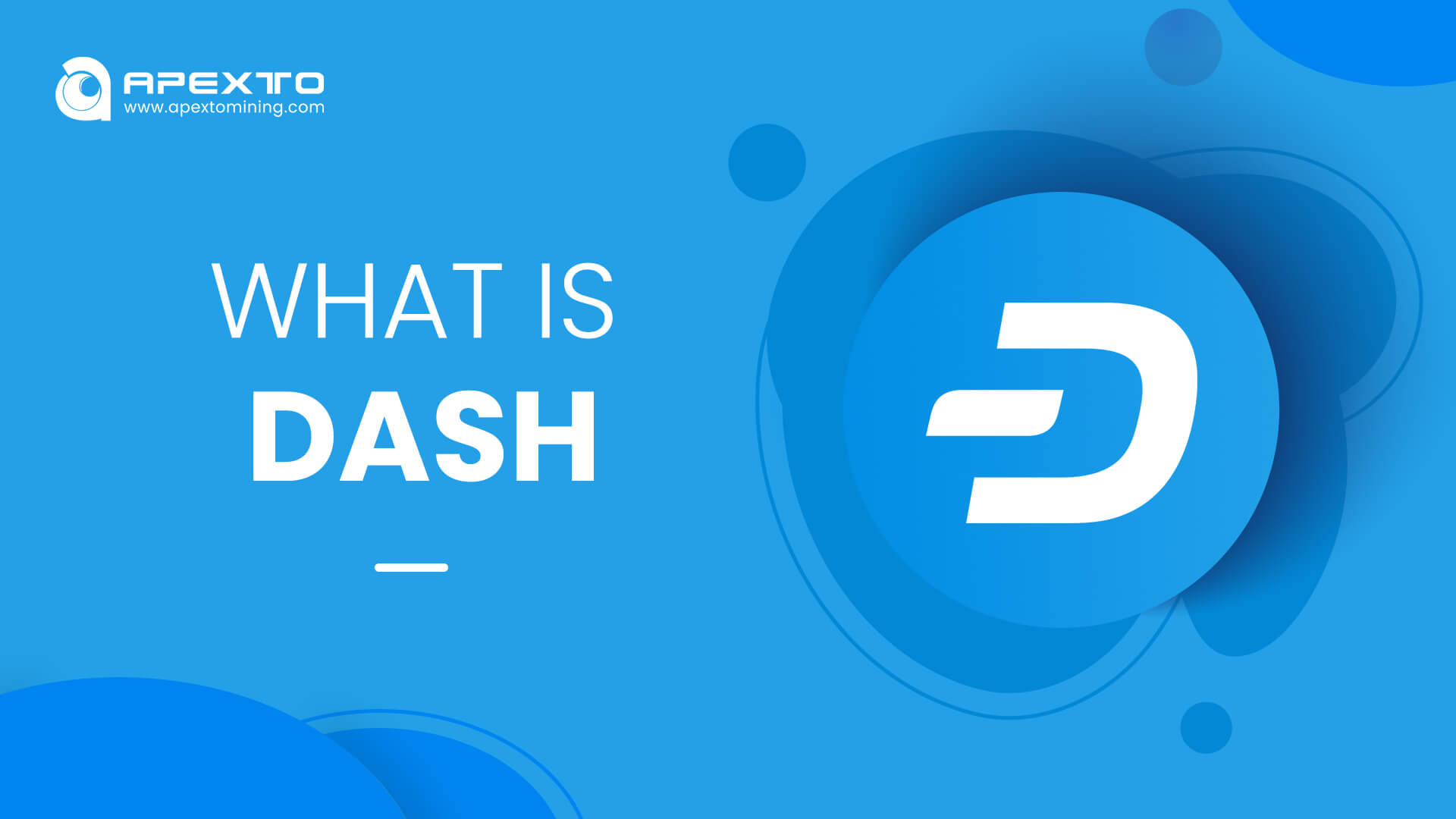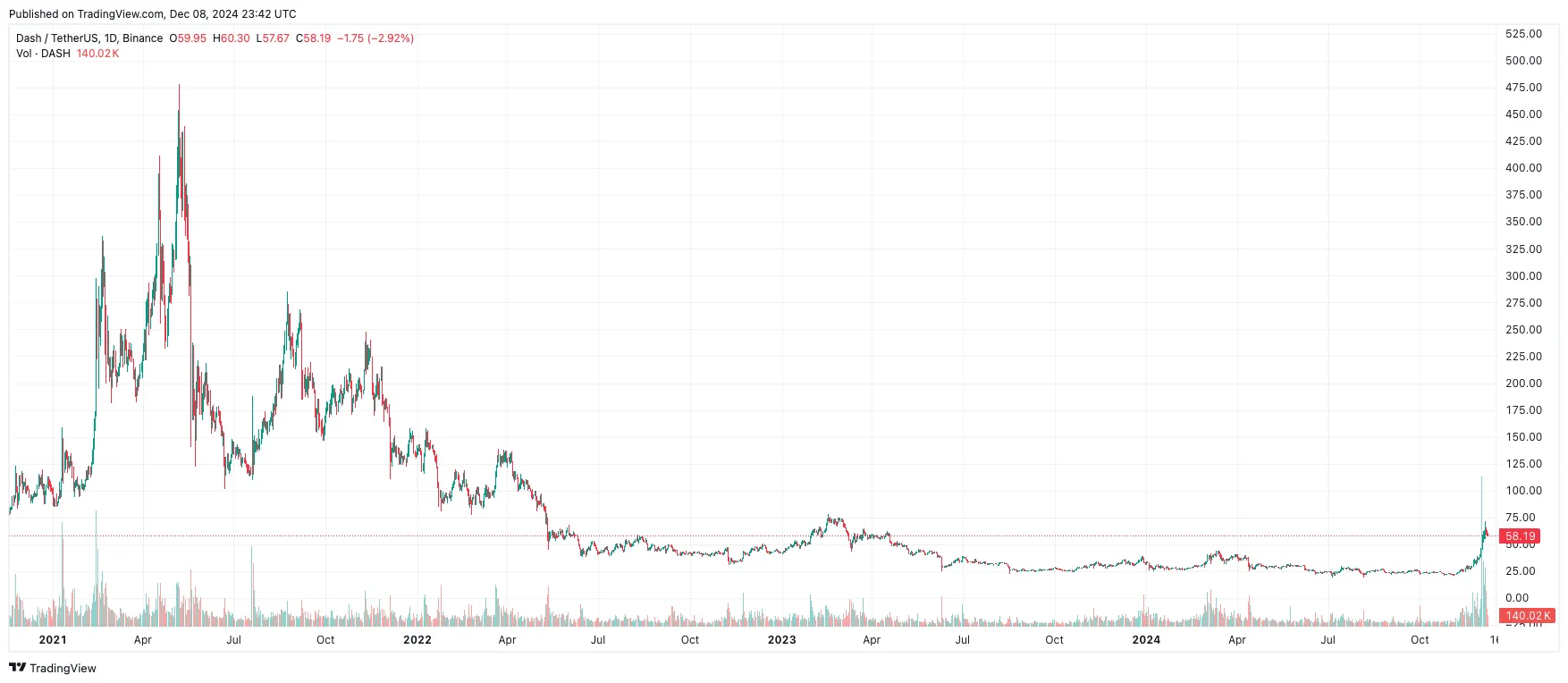Unlocking Dash: Price Predictions, Mining Insights, and Market Trends

Introduction: What is Dash Coin?
Dash Coin, often referred to as “Digital Cash,” is a cryptocurrency designed to facilitate fast, secure, and low-cost payments across the globe. Launched in 2014 by Evan Duffield, Dash started as a fork of Bitcoin, with a focus on enhancing privacy and transaction speed. Its unique two-tier network, powered by miners and masternodes, enables advanced features like InstantSend and PrivateSend. Over the years, Dash has evolved into a versatile digital currency used for everyday transactions and embraced by merchants worldwide.
Dash Coin Price: Historical Trends and Future Predictions
Dash Coin’s price history highlights the volatility typical of cryptocurrencies. As seen in the chart, Dash experienced a significant surge during the 2021 bull run, peaking at over $500. This was followed by a gradual decline, mirroring the broader crypto market downturn. By late 2024, Dash has stabilized around $58, reflecting its current market position as a mid-tier cryptocurrency.
Dash’s price trends are influenced by a variety of factors, including its adoption rate, technological upgrades, and macroeconomic conditions. The introduction of features like InstantSend and PrivateSend has helped sustain interest among privacy-focused users and institutions. Analysts remain cautiously optimistic, predicting a possible recovery to the $100–$200 range if the crypto market experiences another bull cycle. Longer-term projections for 2025 suggest that Dash could achieve significant gains, depending on its utility and broader market adoption.
Buying Dash: Where and How
Dash Coin is a widely traded cryptocurrency, making it accessible on many major exchanges such as Binance, Coinbase Pro, Kraken, and Huobi Global. It can be purchased using fiat currencies like USD, or through trading pairs with cryptocurrencies such as Bitcoin (BTC) and Ethereum (ETH). Dash is also available in stablecoin markets, including USDT and USDC, providing liquidity for traders.
What sets Dash apart in the buying process is its inclusion on both spot and derivatives markets, which allows traders to take advantage of price fluctuations and market conditions. Additionally, many exchanges support direct USD-to-Dash transactions, catering to users who prefer simplified purchasing options.
For investors, knowing where to trade Dash is crucial. It’s commonly recommended to research exchanges thoroughly and utilize secure wallets for long-term storage. Dash’s accessibility and liquidity make it an appealing choice for both newcomers and seasoned cryptocurrency enthusiasts.
Mining Dash: Methods and Profitability
Mining Dash involves solving complex cryptographic puzzles using specialized hardware to secure the network and validate transactions. Dash utilizes the X11 algorithm, a unique and energy-efficient consensus mechanism developed by its founder, Evan Duffield. This algorithm employs 11 different hash functions, providing enhanced security and reduced power consumption compared to traditional algorithms like SHA-256.
The mining process is highly competitive, with rewards distributed to both miners and masternodes. Approximately 45% of block rewards go to miners, making Dash mining a viable option for those with the right hardware. ASIC miners, such as the Antminer D7, are considered the most efficient tools for mining Dash, delivering high hashrates while minimizing electricity costs.
For solo miners, the profitability of Dash mining depends on factors like electricity costs, hardware efficiency, and the network’s difficulty level. Many prefer joining mining pools to improve their chances of earning rewards. Platforms like F2Pool and AntPool are popular choices for Dash miners. Mining profitability can be assessed using tools like the Dash Coin Mining Calculator, which helps estimate potential earnings based on current market conditions.
Dash’s two-tier network and Proof-of-Work consensus ensure security while offering competitive rewards for participants. As adoption grows, mining Dash remains an attractive option for individuals and institutions seeking long-term involvement in the network.
Choosing the Best Dash Miner
Based on the current market conditions and mining hardware performance, only the Antminer D9 and Antminer D7 are profitable.
| Miner | Hashrate (GH/s) | Power Consumption (W) | Daily Revenue (DASH/USD) | Daily Profit (USD) |
|---|---|---|---|---|
| Antminer D9 | 1770 | 2839 | 0.1391 DASH / $8.10 | $4.01 |
| Antminer D7 | 1286 | 3148 | 0.1011 DASH / $5.89 | $1.36 |
Dash mining has become increasingly competitive, with only a few ASIC miners currently delivering positive returns under standard electricity rates. Among these, the Antminer D9 stands out as the most profitable option, generating a daily profit of $4.01 thanks to its high efficiency and impressive hashrate of 1770 GH/s. The Antminer D7, while less powerful, also offers positive returns, with a daily profit of $1.36, making it a more accessible choice for miners with limited budgets.
For other miners like the FusionSilicon X7, profitability remains challenging unless miners have access to ultra-low electricity costs. In regions with abundant renewable energy, such as hydroelectric power in certain parts of Asia or South America, these miners can still generate modest returns. Additionally, machines like the StrongU STU-U6 and INNOSILICON A5+, although unprofitable at standard rates, might serve niche purposes for experimental setups or supplemental mining.
The profitability of Dash mining hinges on three critical factors. Electricity Costs: With electricity typically accounting for the largest operational expense, miners must target regions with rates below $0.05/kWh to remain competitive. Mining Difficulty and Rewards: Dash’s X11 algorithm adjusts mining difficulty to maintain a consistent block time, directly influencing profitability. Block rewards, split between miners and masternodes, also determine earnings potential. Market Trends: Fluctuations in Dash’s market price significantly impact miner revenue. A price surge could quickly turn currently unprofitable machines into viable options.
To make informed decisions, miners should regularly use tools like the Dash Coin Mining Calculator, which helps estimate returns based on hardware specifications, electricity costs, and network conditions. As the market evolves, investing in high-performance miners like the D9 ensures a competitive edge, while adapting to local conditions can help maximize profitability.
CONCLUSION
Dash Coin has cemented its place in the cryptocurrency ecosystem as a versatile and efficient digital currency. Its unique features, such as InstantSend for fast transactions and PrivateSend for enhanced privacy, continue to attract users seeking reliable and secure payment solutions. With a strong focus on decentralization, Dash's governance system, powered by masternodes, allows for ongoing innovation and adaptability in a rapidly evolving market. From a mining perspective, Dash remains an appealing option for those with access to efficient hardware and affordable electricity. Miners who invest in high-performance ASIC miners like the Antminer D9 or D7 stand to benefit from Dash’s well-structured block rewards and low network congestion. As the Dash network adjusts its mining difficulty and block emission rates, profitability will remain a function of technological advancements and market dynamics. In terms of price, Dash continues to show potential as both a store of value and a medium of exchange. Analysts predict that Dash’s price could rebound significantly if adoption increases and the broader cryptocurrency market enters a bull phase. Dash’s historical resilience, combined with its focus on scalability and user-friendliness, positions it well for future growth. Key developments, such as partnerships with payment platforms and expanded use cases in e-commerce, could further strengthen its value proposition. As with any cryptocurrency, investors and miners should stay informed about market trends and network updates. For those seeking long-term involvement, Dash offers a blend of innovation, community-driven development, and practical utility that ensures its relevance in the competitive crypto landscape.









